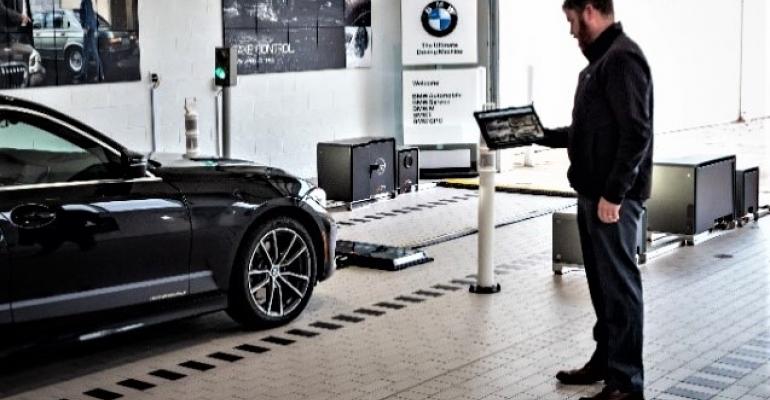Automated vehicle inspection systems at dealerships and service garages can make driving safer by detecting hard-to-find tire and underbody problems, a provider of the technology says.
More than 45% of respondents in a recent survey of service personnel at U.S. car dealerships and repair garages by UVeye indicate automated tire-inspection systems would more accurately pinpoint serious problems and help ensure customer safety.
Automated camera-based underbody inspections also have proved to be much faster and more accurate in finding critical safety problems related to brake, fuel and steering systems, UV Eye, an Israeli-based supplier of high-technology inspection systems, says in a news release.
While more than 80% of the garages surveyed offer routine low-cost spring or winter vehicle checks, most visual inspections are done in less than 15 minutes and can identify safety-related issues less than 40% of the time.
The survey shows nearly 60% of all tire checks are based entirely on a visual shop-floor inspection, while only 6% of service departments rely solely on automated systems. UVeye estimates that even fewer underbody inspections are automated.
Drive-through camera-based inspection systems are faster and can detect safety defects more accurately, UVeye CEO Amir Hever says. Using artificial intelligence and machine-learning technologies, a tire-inspection system can identify within seconds a tire’s brand and technical specifications, while recording pressure, tread depth, sidewall damage and other potential safety problems.
An automated underbody inspection can take less than 90 seconds to check for a wide variety of problems as well. Multiple high-resolution cameras can generate thousands of images per second to pinpoint missing components, damage and other safety-related issues much more accurately than the human eye.
“While most service departments have checklists to help guide technicians and customer service personnel through an inspection process, there’s no industrywide standard for identifying serious vehicle safety issues,” Hever says. “The development of automated inspection technology removes inconsistencies and human error from the equation.”
More than 6.7 million accidents and 36,000 fatalities were recorded on U.S. roads and highways in 2019, according to the U.S. Department of Transportation. More than 30% of all vehicle accidents are caused by some form of mechanical failure, DOT studies have shown. Tire and wheel problems are the leading component cause of highway accidents accounting for more than 40% of the total, followed by brake failures at 25%.
While tires continue to be the leading vehicle-component cause of highway accidents, undercarriage damage also poses a significant risk for car owners since it is much more likely to go unnoticed.
UVeye has developed a variety of automated inspection systems that combine proprietary algorithms, cloud architecture, artificial intelligence, machine learning and sensor fusion technologies to help standardize and speed up most inspection processes previously done manually.
The company began installing contact-free vehicle-inspection systems at new and used-car dealerships and used-car auctions in the U.S. last year.





